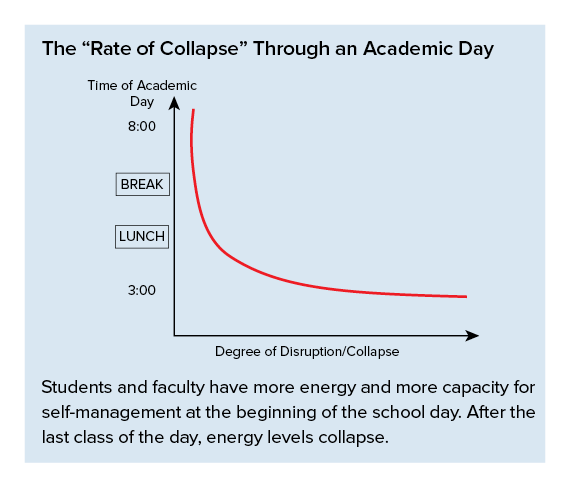

Volume 50 No. 4 ● April 1, 2025 ● Member Sneak Peek
ISM research has repeatedly shown that a strong sense of community is a differentiator when students and parents are choosing a school or choosing to remain at a school. In middle and upper school, this sense of community is fostered during assembly, advisory, and activity programs.
Furthermore, having access to daily extra help is essential in providing support to your students — especially middle school students, who benefit from a daily study hall.
Hours set aside for assembly, advisory, and activities, along with study hall sessions, are called “loose periods,” and they are a crucial and unique part of the overall experience at a private-independent school. Loose periods are solely dependent on student interest! But these are the hours that make your school unique. They are when students build community, grow in self-direction, and increase their sense of belonging.
When to schedule loose periods
Sometimes faculty push for loose periods to be scheduled at the end of the day in an attempt to protect classes from early dismissal for athletics. They reason that loose periods are less important than academic classes; therefore, they can be missed if necessary.
 However, the belief that loose periods can be missed is exactly the problem. The psychological “end of the day” happens at the end of the last class. Anything that takes place after that last class suffers from low student and faculty energy, engagement, and self-management.
However, the belief that loose periods can be missed is exactly the problem. The psychological “end of the day” happens at the end of the last class. Anything that takes place after that last class suffers from low student and faculty energy, engagement, and self-management.
Furthermore, loose periods held at the end of the day are likely to be lightly attended, as many students find reasons to skip them: Not only do sports impinge on them, but also parents may schedule medical appointments and seniors may push for privileges that get them out the door early.
Thus the end of the day is actually the worst time of the day for loose periods.
When a loose period is scheduled at the end of the day, it is inevitably seen as wasted time. It is unhelpful to the building of community and used poorly by students who would benefit from it.
When is the best time to schedule a loose period?
- Community time for clubs, activities, and assemblies should be scheduled for mid-morning.
- Advisory periods should also take place mid-morning, after the morning break.
- Middle school study hall should take place before or after lunch, when students have already been assigned homework in at least one of their earlier classes. If this time is set aside for the whole middle school, students can be assigned to their advisory during study hall, and they can check out of study hall to visit their teacher for extra help.
Some will object that mid-morning is prime learning time that should not be usurped by community time. But research has consistently shown that there is no prime learning time for all teens. Instead, the best time for learning differs for each individual; there is no single best time for all.
Thinking carefully about the loose period enables you to have the best chance of success. It is often this period’s placement, rather than its content, that dictates student engagement, interest, and support.
Editor’s note: An earlier version of this article appeared in the May 7, 2012, issue of Ideas & Perspectives under the title “Scheduling Theory: The Rate of Collapse and ‘Loose’ Periods.”